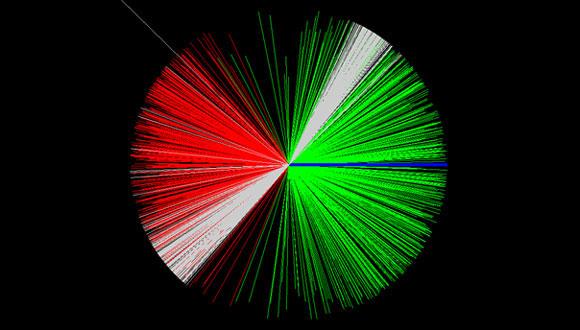Israel Joint Nuclear Physics Seminar
PROGRAM
14:30 - 14:45 Refreshments
14:45 - 15:45 ³The RPWELL a potential sampling element for (semi-) digital hadron calorimeters², Shikma Bressler, WIS
Abstract:
For the past few years our group has been investigating various configurations of gas-avalanche detectors with potential applications as sampling elements in (Semi-) Digital Hadronic CALorimeters (S)DHCALs. This has led to a particularly promising detector structure the Resistive Plate WELL (RPWELL). Recent results show that this cost-effective, large-area, compact (thin), robust, simple-to-produce, fast gas-avalanche sensing-element can fully meet the DHCAL requirements, with performance characteristics surpassing those of other technologies. In particular, our studies demonstrated a completely discharge-free operation in argon-based gas mixtures, also under a high-rate hadronic beam. This unique feature key to the successful operation of the detector as an (S)DHCAL sensing element - also makes the RPWELL an attractive, industrially mass-produced detector for large-area applications in particle-, astroparticle- and nuclear- physics, as well as in homeland security.
15:45 - 16:15 Coffee break
16:15 - 17:15 "Charge symmetry breaking in Lambda hypernuclei², Avraham Gal, HUJ
Abstract:
Charge symmetry breaking (CSB) in the light hadronic spectrum,e.g. the neutron-proton mass difference, has been recently explained by LQCD-LQED calculations in terms of the u-d quark mass difference plus electromagnetic interactions among the u,d,s quarks. A similar level of understanding CSB is lacking for two-baryon configurations (e.g. pp, pn and nn, and more so for Lambda-p and Lambda-n). In nuclei, the CSB contribution of about 70 keV to the Coulomb-dominated 764 keV 3He-3H mass difference is accounted for by hadronic contributions. Given this background, the CSB implied by the Lambda separation energy difference 350+/-60 keV in the A = 4 mirror hypernuclei ground states, obtained by attaching a Lambda hyperon to the (3H, 3He) mirror nuclei, is LARGE. It has defied theoretical attempts to reproduce it in terms of CSB in hyperon masses and in hyperon-nucleon interactions, including one pion exchange arising from (Lambda <--> Sigma0) mixing. In this talk I will review new calculations of CSB in the A = 4 Lambda hypernuclei, plus extensions to heavier mirror Lambda hypernuclei, using several strong-interaction (Lambda N <--> Sigma N) coupling potential models, including a chiral EFT model in leading order. These calculations demonstrate for the first time that the observed CSB splitting of mirror levels in Lambda hypernuclei can be reproduced using realistic theoretical interaction models.
References: (i) A. Gal, PLB 744 (2015) 352; (ii) D. Gazda and A. Gal, arXiv:1512.01049.


